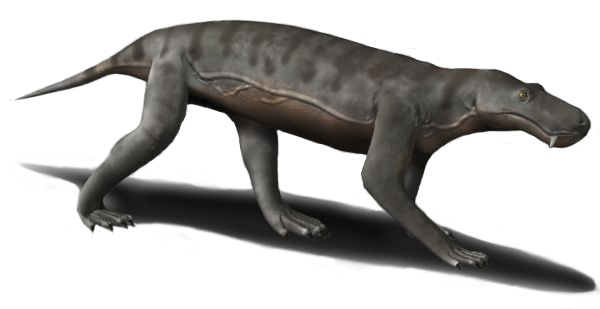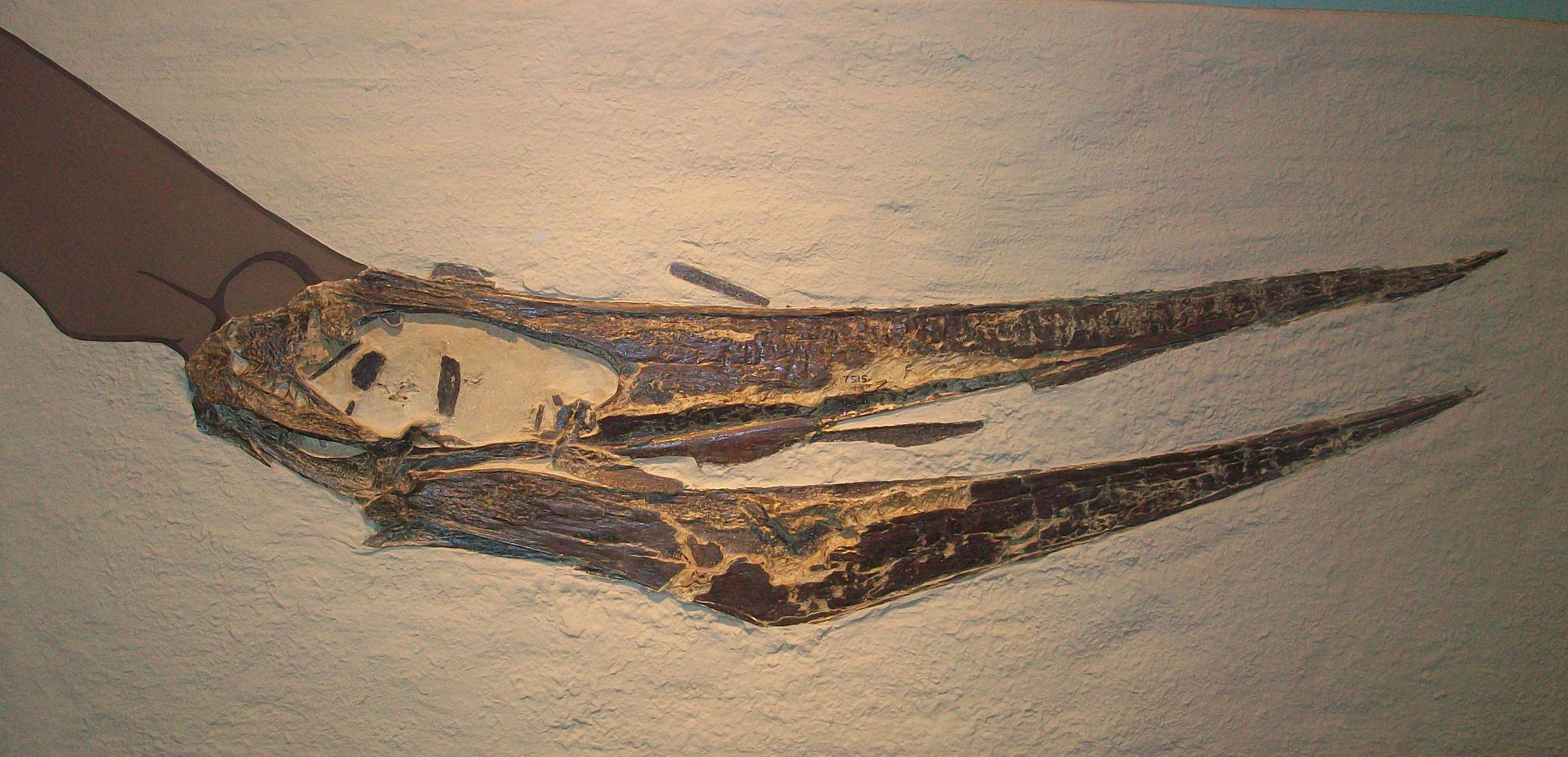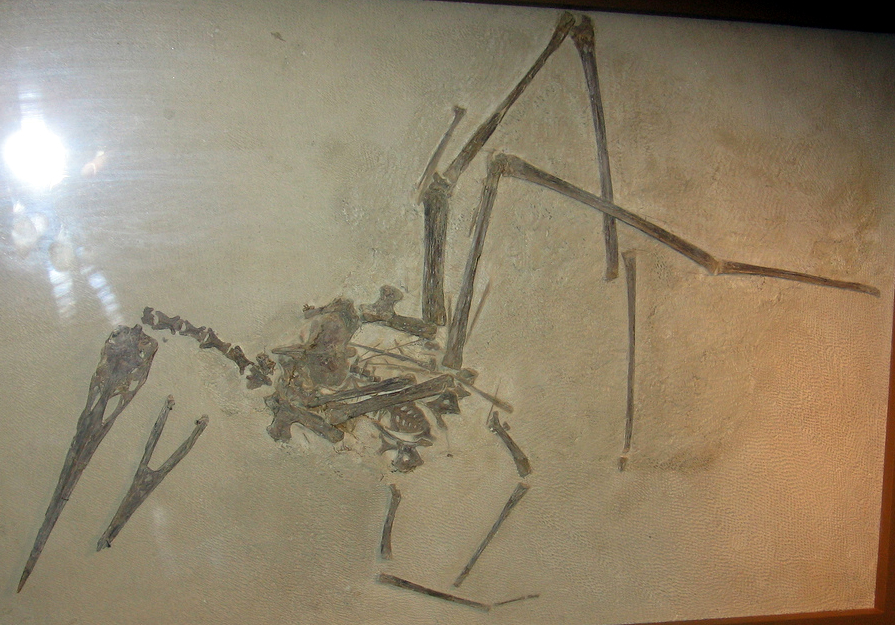|
1876 In Paleontology ...
Dinosaurs Anapsids Newly named anapsids Plesiosaurs Newly named plesiosaurs Pterosaurs New taxa Synapsids Non-mammalian See also References {{DEFAULTSORT:1876 In Paleontology 1870s in paleontology Paleontology Paleontology (), also spelled palaeontology or palæontology, is the scientific study of life that existed prior to, and sometimes including, the start of the Holocene epoch (roughly 11,700 years before present). It includes the study of fossi ... [...More Info...] [...Related Items...] OR: [Wikipedia] [Google] [Baidu] |
Chondrosteosaurus
''Chondrosteosaurus'' (meaning "cartilage and bone lizard") was a sauropod dinosaur from Early Cretaceous England. The type species, ''Chondrosteosaurus gigas'', was described and named by Richard Owen in 1876. The fossils of ''Chondrosteosaurus'' were discovered in the Wessex Formation on the Isle of Wight, likely Brighstone or Brook. ''C. gigas'' is known only from two neck vertebrae (specimens BMNH 46869, the holotype, and BMNH 46870), with distinctive hollows and internal passages now interpreted as evidence of pneumatic air sacs. Paleontologist Harry Seeley had interpreted similar structures as pneumatic in his specimen of ''Ornithopsis''.Seeley, H.G. (1870). "On ''Ornithopsis'', a gigantic animal of the pterodactyle kind from the Wealden." ''Annals and Magazine of Natural History'', Series 4, 5: 279-283. Owen disagreed with Seeley's concept of a giant creature bridging the gap between birds or pterosaurs (Owen considered sauropods to be whale-like marine reptiles), and ... [...More Info...] [...Related Items...] OR: [Wikipedia] [Google] [Baidu] |
Pareiasaurus
''Pareiasaurus'' is an extinct genus of pareiasauromorph reptile from the Permian period. It was a typical member of its family, the pareiasaurids, which take their name from this genus. Fossils have been found in the Beaufort Group. Description ''Pareiasaurus'' is a large quadruped, about long, with elephantine legs, walking in a typically reptilian posture. The skull is broad and the snout short. Its skull had several spine- and wart-like protrusions. ''Pareiasauruss leaf-shaped teeth, ideal for biting through tough plant fibers, indicate it was a herbivore. Even the palate The palate () is the roof of the mouth in humans and other mammals. It separates the oral cavity from the nasal cavity. A similar structure is found in crocodilians, but in most other tetrapods, the oral and nasal cavities are not truly sepa ... had teeth. Species ''P. nasicornis'' (Haughton and Boonstra, 1929) is from the ''Tropidostoma'' Zone, Karoo basin, South Africa. This early form is one ... [...More Info...] [...Related Items...] OR: [Wikipedia] [Google] [Baidu] |
Gorgonops
''Gorgonops'' (from el, Γοργών 'Gorgon' and 'eye, face', literally 'Gorgon eye' or 'Gorgon face') is an extinct genus of gorgonopsian therapsids, of which it is the type genus, having lived during the Late Permian (Wuchiapingian), about 260–254 million years ago in what is now South Africa. Despite its popularity, ''Gorgonops'' is a medium-sized gorgonopsian (about long maximum), regularly confused by the general public with the more massive ''Inostrancevia'', known from Russia, due to their similar appearance and the various media that tend to refer them by the name of the group they belong rather than by their genus names, which does not help in differentiation. History of discovery The holotype of the type species, ''Gorgonops torvus'', was in 1876 one of the first therapsids described, by Richard Owen, who also coined the name "Dinosauria" on the basis of the first known dinosaur fossils. It was also used as the type for which Richard Lydekker described the family ... [...More Info...] [...Related Items...] OR: [Wikipedia] [Google] [Baidu] |
Endothiodon
''Endothiodon'' (/ɛndoʊθiːoʊdɔːn/ "inner tooth" from Greek endothi (ἔνδοθῐ), "within", and odon (ὀδών), "tooth", most likely named for the characteristic of the teeth being placed internally to the maxillaBoos A. S., Schultz C. L., Vega C. S., Aumond J. J. "On the presence of the Late Permian dicynodont ''Endothiodon'' in Brazil" Palaeontology 56:4, 837-848 (2013)) is an extinct genus of large dicynodont from the Late Permian. Like other dicynodonts, ''Endothiodon'' was an herbivore, but it lacked the two tusks that characterized most other dicynodonts. The anterior portion of the upper and lower jaw are curved upward, creating a distinct beak that is thought to have allowed them to be specialized grazers.Latimer E. M., Gow C. E., Rubidge B. S. "Dentition and feeding niche of ''Endothiodon'' (Synapsida;Anomodontia)" Palaeontologia Africana 32, 75-82 (1995) ''Endothiodon'' was widespread and is found across the southern region of what was then a single large co ... [...More Info...] [...Related Items...] OR: [Wikipedia] [Google] [Baidu] |
Cistecephalus
''Cistecephalus'' is an extinct genus of dicynodont therapsid from the Late Permian of southern Africa (South Africa and Zambia). It was a small, specialised, burrowing dicynodont, possibly with habits similar to a modern mole. The head was flattened and wedge-shaped, the body long, and the forelimbs very strong, with similarities in structure to the forelimb of modern burrowing mammals. It was one of the first genera of dicynodonts to be described, by Richard Owen, in 1876. ''Cistecephalus'' could reach up to in length. Description ''Cistecephalus'' was one of the most atypical dicynodont genera. However, it was broadly similar in anatomy to other cistecephalids, all of which share similar adaptations to digging. Its skull was broad, with laterally-directed temporal openings and a sharply tapering snout, similar to extant fossorial animals. However, it has relatively large, anteriorly-directed orbits, suggesting binocular vision. It had a short neck and laterally-directed sho ... [...More Info...] [...Related Items...] OR: [Wikipedia] [Google] [Baidu] |
Pteranodon Longiceps Mmartyniuk Wiki
''Pteranodon'' (); from Ancient Greek (''pteron'', "wing") and (''anodon'', "toothless") is a genus of pterosaur that included some of the largest known flying reptiles, with ''P. longiceps'' having a wingspan of . They lived during the late Cretaceous geological period of North America in present-day Kansas, Nebraska, Wyoming, South Dakota and Alabama. More fossil specimens of ''Pteranodon'' have been found than any other pterosaur, with about 1,200 specimens known to science, many of them well preserved with nearly complete skulls and articulated skeletons. It was an important part of the animal community in the Western Interior Seaway. ''Pteranodon'' was not a dinosaur. By definition, all dinosaurs belong to the group Dinosauria; ''Pteranodon'' belongs to the group Pterosauria. Nonetheless, ''Pteranodon'' is the most famous pterosaur, frequently featured in dinosaur media and strongly associated with dinosaurs by the general public. While not dinosaurs, pterosaurs such as ... [...More Info...] [...Related Items...] OR: [Wikipedia] [Google] [Baidu] |
Pteranodon
''Pteranodon'' (); from Ancient Greek (''pteron'', "wing") and (''anodon'', "toothless") is a genus of pterosaur that included some of the largest known flying reptiles, with ''P. longiceps'' having a wingspan of . They lived during the late Cretaceous geological period of North America in present-day Kansas, Nebraska, Wyoming, South Dakota and Alabama. More fossil specimens of ''Pteranodon'' have been found than any other pterosaur, with about 1,200 specimens known to science, many of them well preserved with nearly complete skulls and articulated skeletons. It was an important part of the animal community in the Western Interior Seaway. ''Pteranodon'' was not a dinosaur. By definition, all dinosaurs belong to the group Dinosauria; ''Pteranodon'' belongs to the group Pterosauria. Nonetheless, ''Pteranodon'' is the most famous pterosaur, frequently featured in dinosaur media and strongly associated with dinosaurs by the general public. While not dinosaurs, pterosaurs such as ' ... [...More Info...] [...Related Items...] OR: [Wikipedia] [Google] [Baidu] |
Nyctosaurus DB
''Nyctosaurus'' (meaning "night lizard" or "bat lizard") is a genus of nyctosaurid pterosaur from the Late Cretaceous period of what is now the Niobrara Formation of the mid-western United States, which, during the time ''Nyctosaurus'' was alive, was covered in an extensive shallow sea. Some remains belonging to a possible ''Nyctosaurus'' species called ''N.lamegoi'' have been found in Brazil, making ''Nyctosaurus'' more diverse. The genus ''Nyctosaurus'' has had numerous species referred to it, though how many of these may actually be valid requires further study. At least one species possessed an extraordinarily large antler-like cranial crest. ''Nyctosaurus'' was a mid-sized pterosaur that lived along the shores of the Niobrara Formation of the United States, which back then was within a large inland sea called the Western Interior Seaway. It has been suggested that it would have flown similar to modern-day soaring birds such as albatrosses, which consisted of flying very lo ... [...More Info...] [...Related Items...] OR: [Wikipedia] [Google] [Baidu] |
Nyctosaurus
''Nyctosaurus'' (meaning "night lizard" or "bat lizard") is a genus of nyctosaurid pterosaur from the Late Cretaceous period of what is now the Niobrara Formation of the mid-western United States, which, during the time ''Nyctosaurus'' was alive, was covered in an extensive shallow sea. Some remains belonging to a possible ''Nyctosaurus'' species called ''N.lamegoi'' have been found in Brazil, making ''Nyctosaurus'' more diverse. The genus ''Nyctosaurus'' has had numerous species referred to it, though how many of these may actually be valid requires further study. At least one species possessed an extraordinarily large antler-like cranial crest. ''Nyctosaurus'' was a mid-sized pterosaur that lived along the shores of the Niobrara Formation of the United States, which back then was within a large inland sea called the Western Interior Seaway. It has been suggested that it would have flown similar to modern-day soaring birds such as albatrosses, which consisted of flying very lon ... [...More Info...] [...Related Items...] OR: [Wikipedia] [Google] [Baidu] |
Uronautes
''Uronautes'' is a dubious genus of extinct plesiosaur from the family Rhomaleosauridae. ''Uronautes'' is known from several fossilized vertebra, portions of a few limbs, and ribs. Etymology The word ''Uronautes'' comes from a fusion of the two Greek words ''Ουρα'', meaning "tailed," and ''Ναυτεσ'', meaning "sailor", or "mariner". The species name of ''U. cetiformis'' comes from the Greek word for whale (or any large sea monster), ''κῆτος'' and the Latin word ''forma'', which means "shaped", of "formed" meaning "shape". Taxonomy ''Uronautes'' was first described by the American paleontologist, Edward Drinker Cope in 1876. Because of the small number of supposed ''Uronautes'' fossils, Samuel Paul Welles described the genus as a "nomen dubium", doubting that the remains were evidence of a true genus in 1956. The genus ''Uronautes'' is still considered a ''nomen dubium'' which means "dubious name". In zoological nomenclature, a ''nomen dubium'' is a scientific name t ... [...More Info...] [...Related Items...] OR: [Wikipedia] [Google] [Baidu] |






